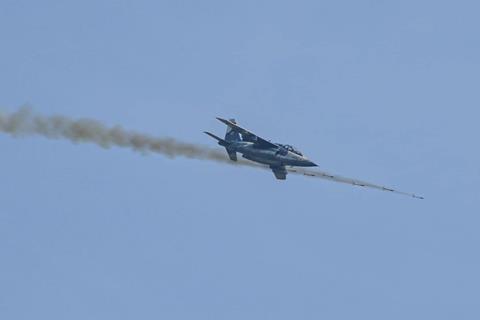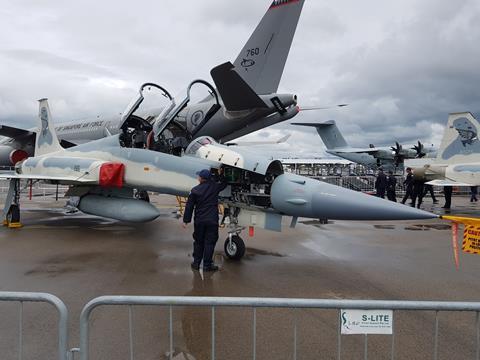The Royal Thai Air Force (RTAF) has outlined its latest equipment plan in a new whitepaper that also suggests a lack of progress with key combat aircraft acquisitions.
Detailing the service’s aspirations for a range of capabilities and systems across the air, ground, and space domains, the RTAF White Paper 2024 updates a similar document issued in 2020.

The report reiterates the missions of the RTAF, and underlines the changes in the world since 2020, namely Russia’s invasion of Ukraine and increasing friction between China and the USA. The US-China tensions are a particular challenge for Thailand, officially a neutral country.
The whitepaper again requests the replacement of ageing Lockheed Martin F-16s serving with 102 Sqn. Whereas the 2020 whitepaper called for 12 new fighters to be obtained from 2023-2028, the updated whitepaper pushes the timeframe back, seeing a need for 12-14 fighters to be acquired between 2025 and 2034.
Unlike the 2020 whitepaper, the 2024 version also calls for F-16s serving with 403 Sqn to be replaced with 12-14 new jets, with the timeframe given as 2037-2046.
The whitepaper makes no mention of 103 Sqn, another F-16 operator. The 2020 whitepaper called for the unit to receive 12 new fighters over the 2028-2031 period.
As with 2020, however, the whitepaper still sees a need for around 24-28 new fighters – although timeframes have been pushed out.
Likely contenders for Thailand’s fighter requirements are Lockheed with the F-16 Block 70/72 and Saab with the updated Gripen E.

There is no mention in the updated whitepaper, however, of a plan mooted in 2020 to obtain a single Gripen C/D. The RTAF operates 11 Gripen C/Ds after losing a Gripen C in a 2017 air show crash.
Unlike 2020, the new whitepaper also seeks the replacement of 211 Sqn’s Northrop F-5E/Fs and 231 Sqn’s Dassault/Dornier Alpha Jets. Overall, the procurement calls for 12-14 aircraft to be obtained in the 2031-2035 timeframe.
Other plans related to combat aircraft include the refurbishment of Raytheon AIM-9M Sidewinder missiles, and the acquisition of a new beyond-visual-range missile with a range in excess of 50nm (92km). Both air-to-air missile programmes are anticipated to run from 2026 to 2029.
As with 2020, the 2024 whitepaper calls for the upgrade of the RTAF’s pair of Saab 340 airborne early warning assets, with the dorsal radar units to be replaced and a command-and-control capability to be added in the 2026-2029 timeframe.

Moreover, the whitepaper proposes the local development of a new unmanned combat air vehicle in the 2026-2029 period, as well as research into drone swarms, manned-unmanned teaming, and an armed tactical unmanned air vehicle.
For training, the RTAF seeks a new lead-in fighter trainer to be obtained in the 2025-2028 period. In 2020, it had called for 12 attack aircraft to replace Aero Vodochody L-39s – Cirium fleets data suggests that the RTAF’s L-39 fleet has been retired.
Thailand also aims to update an Airbus A340-500 used for VIP transport. This will involve refurbishing the aircraft’s landing gear, updating its cabin, and buying used Rolls-Royce Trent 500 engines. Longer term, the RTAF aims to replace the A340 with a long-haul transport capable of flying 12h.

The air force also wants to replace its trio of ATR 72-500s with an aircraft capable of more than 3h flight time. The RTAF also seeks a pair of medium-sized helicopters for VIP work, but which can also be used for medical evacuation and search and rescue.
While the 2020 whitepaper called for the replacement of the RTAF’s 12 Lockheed C-130H tactical transports in the 2022-2029 timeframe, the updated whitepaper instead says the existing fleet should be enhanced, including the upgrade of the turboprops’ Rolls-Royce T56 engines.
The RTAF still wants to replace its Basler BT-67s in the 2031-2035 timeframe. The BT-67 is an updated version of the Douglas DC-3 used for transport and cloud-seeding work.


























